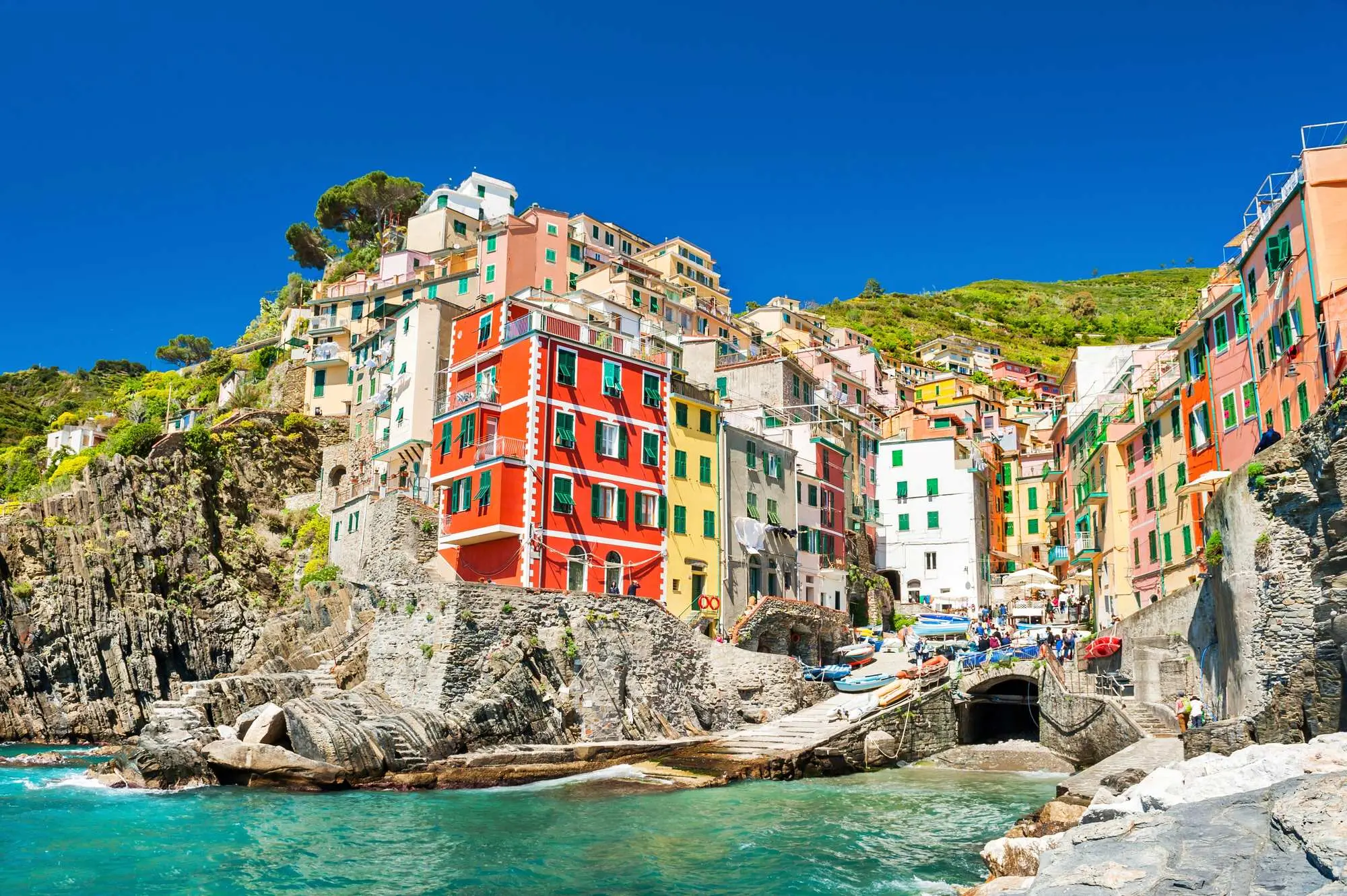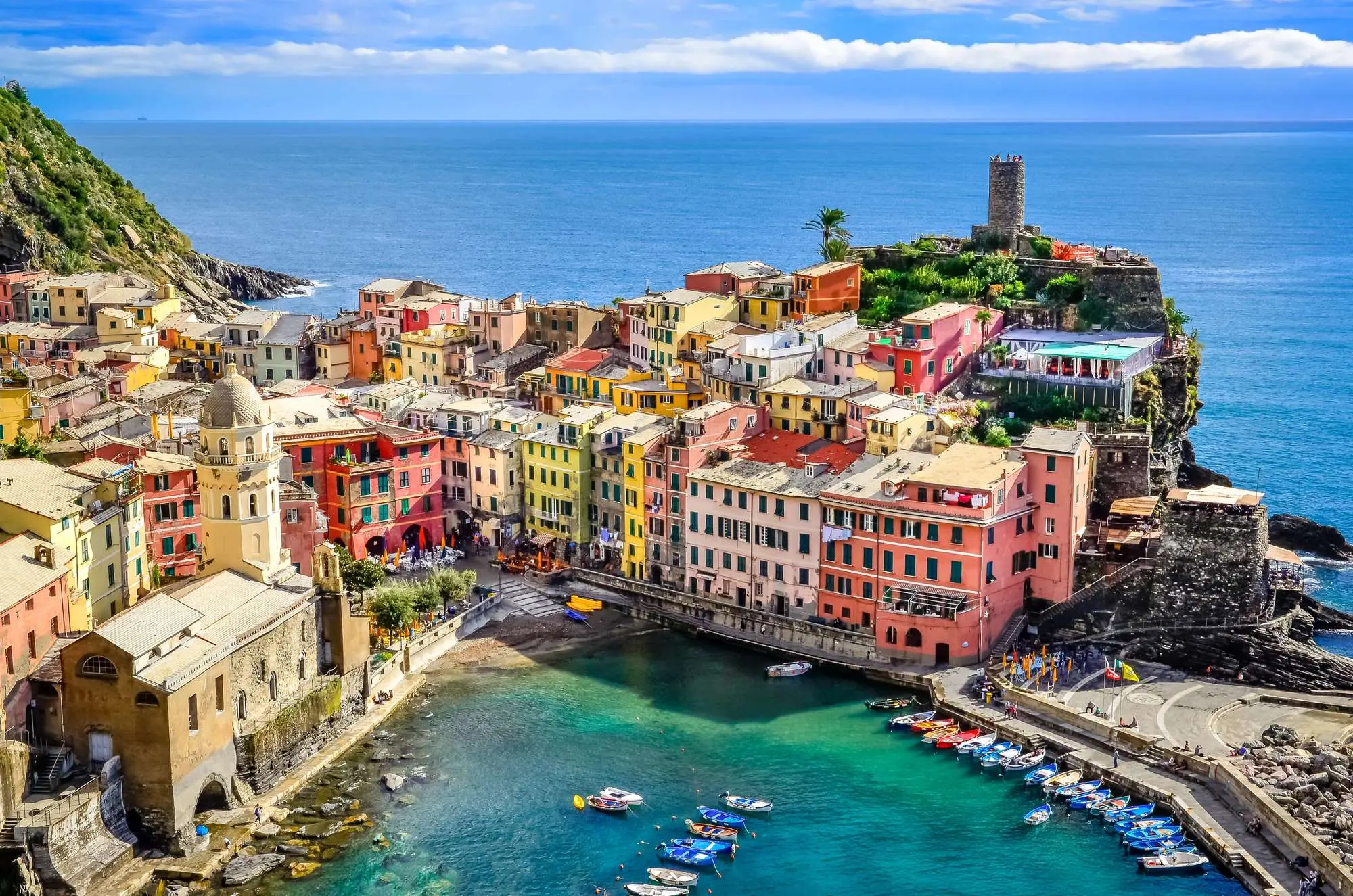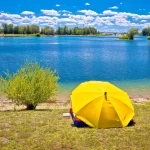Why is Cinque Terre more than a postcard?
On the northwestern coast of Italy, between Genoa and Pisa, lie five small settlements forming one of Europe’s most striking coastal landscapes. They’re called Cinque Terre, meaning “Five Lands“ in Italian.
Tucked into the cliffs of the Ligurian coast, Monterosso al Mare, Vernazza, Corniglia, Manarola, and Riomaggiore have survived for centuries off the main routes, once connected only by narrow paths, the sea, and more recently, the railway. Today they are protected, yet still feel like a world of their own – with their rhythm, unwritten rules, and a view of the sea that’s hard to forget.

Riomaggiore, Cinque Terre, Photo: Smallredgirl Depositphotos
Isolation as a Blessing
For centuries, Cinque Terre had no road access. You could reach them only on foot, by boat, or later, by train, carving its way through tunnels in the cliffs. And that very isolation became their advantage. While the rest of Italy expanded, paved, and built hotels, these villages stayed true to themselves. Today, they remain some of the rare corners of the Mediterranean where modern tourism hasn’t taken over, where the scent of the sea, the cry of seagulls, and the shadows of hanging vines still define the atmosphere.
Terraces Built by Hand, Generation After Generation
The cliffs above the sea aren’t just a natural wonder – they are history. Generations shaped them into thousands of terraces, held up by dry-stone walls, without cement, just stone upon stone. Grapevines, lemon trees, and olives grow on them today, overlooking a horizon that seems endless. Their local dessert wine, Sciacchetrà, golden, thick, and rare, is sipped slowly and remembered long, just like the villages themselves.

Manarola, Cinque Terre, Photo: kwasny222 Depositphotos
Each Village, Its Own World
Monterosso is the largest, and the only one with a true beach, yet still without the glamor. Vernazza, perhaps the most photographed, enchants with its little harbor and a watchtower from the 11th century. Corniglia stands high above the sea, a stubborn reminder that beauty doesn’t always have to reflect in water. Manarola glows like a fairytale at sunset, and Riomaggiore, where houses seem to sink into the rock like pastel blocks. Each village has its pulse, but together they breathe the same rhythm.
Walking as a Ritual
Cinque Terre isn’t something you visit, it’s something you walk through. The most famous trail, Sentiero Azzurro, connects all five villages, winding along cliffs through vineyards, olive groves, pine woods, and rocky coves. Some segments are closed due to erosion, but every open path leads to a reward: a view that takes your breath away and a silence that somehow heals.

Vernazza, Cinque Terre, Photo: martinm303 Depositphotos
No Cars, But Full of Soul
What surprises you most isn’t how beautiful it is, but how quiet. There are no cars, no noise. Instead, you hear oars in the water, footsteps on stone, an old woman singing at her window, the laughter of a couple sitting on a wall, and the bell of a small church above the village. Everything feels authentic, even when you know you’re one of thousands visiting that day. Because here, you’re not a tourist, you’re a guest.
A Place That Can’t Be Replicated
Cinque Terre doesn’t try to be modern. There are no big hotels, no shopping centers, no beach bars. And that’s exactly why it works – it is history in color, nature in a frame, and life in its purest and most powerful form. UNESCO protects it, Italy embraces it, and the world has rightly fallen in love with it.
Because there are many beautiful places. But Cinque Terre? These are five little lands that change you.




Leave a Reply